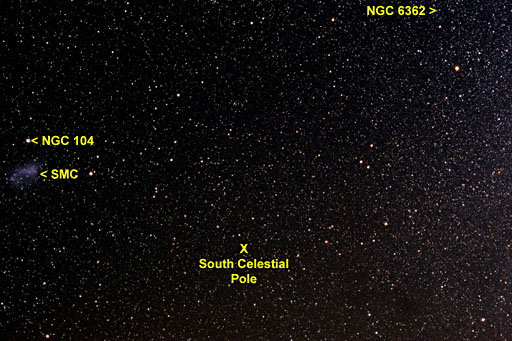
Names:
| English: | Bird of Paradise, Octant | Spanish: | Ave del Paraíso, Octante |
|---|---|---|---|
| German: | Paradiesvogel, Oktant | French: | Oiseau de Paradis, Octant |
Apus is a distinct but small constellation to spot in the sky and can be seen on the right hand side of the photo. Octans on the other side is harder to find (see lines). Both constellations consist of quite faint stars. The brightest star of Apus shines at visual 3.8 mag and Octans' brightest star at 3.7 mag.
The southern celstial pole, the point in the sky the earths axis is pointing at, is located in Octans and labeled in the above photo with marks. The southern stars apparently rotate around this point in the sky during one day. Unfortunately there is no bright star like the Pole Star at the northern celestial pole.
Apus and Octans itself do not contain bright deep sky objects for observers. However, the milky way is quite close (in the image on the right hand side) and a few interesting objects are in the neighboring constellations. The Small Magellanic Cloud in Tucan is the most prominent and easy to observe target in the above shown field.